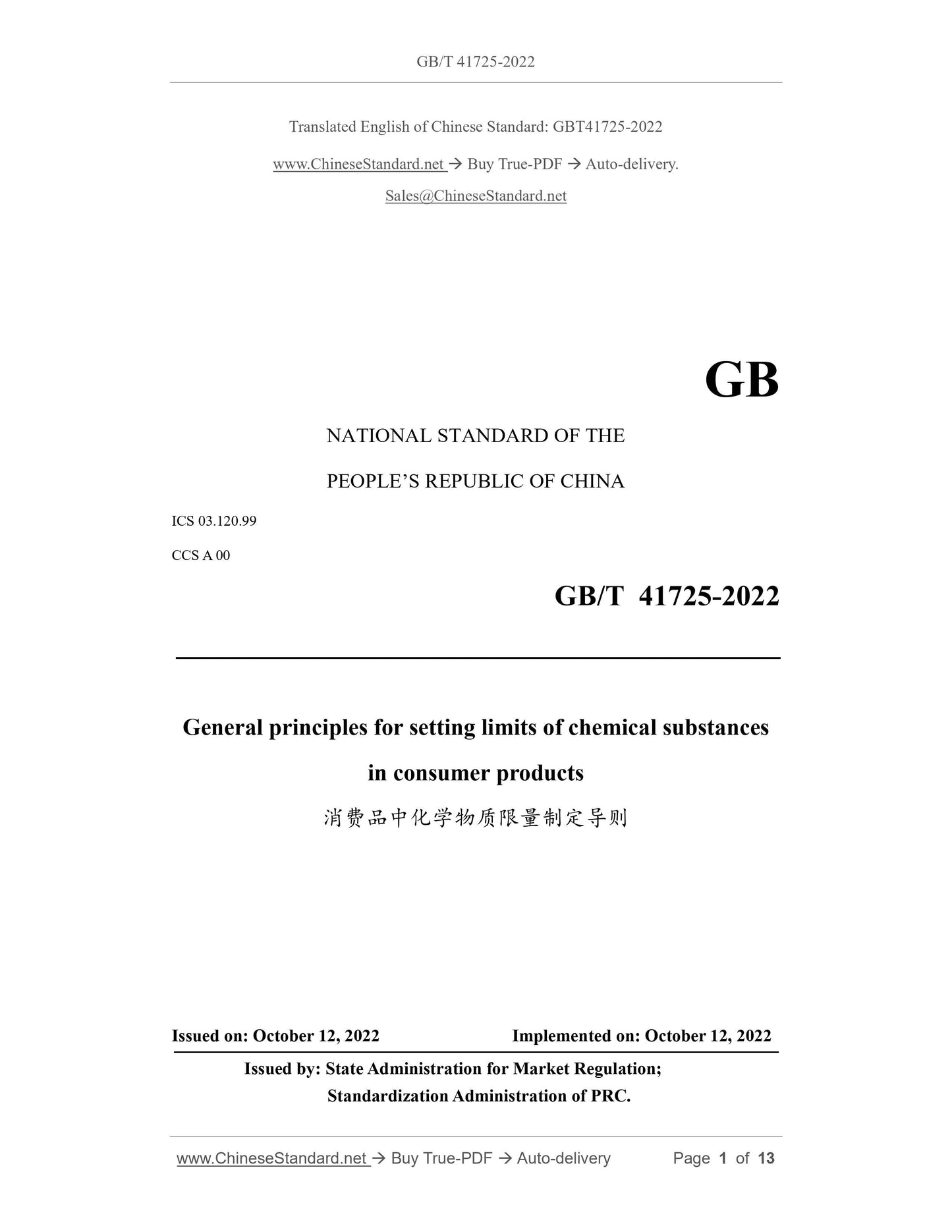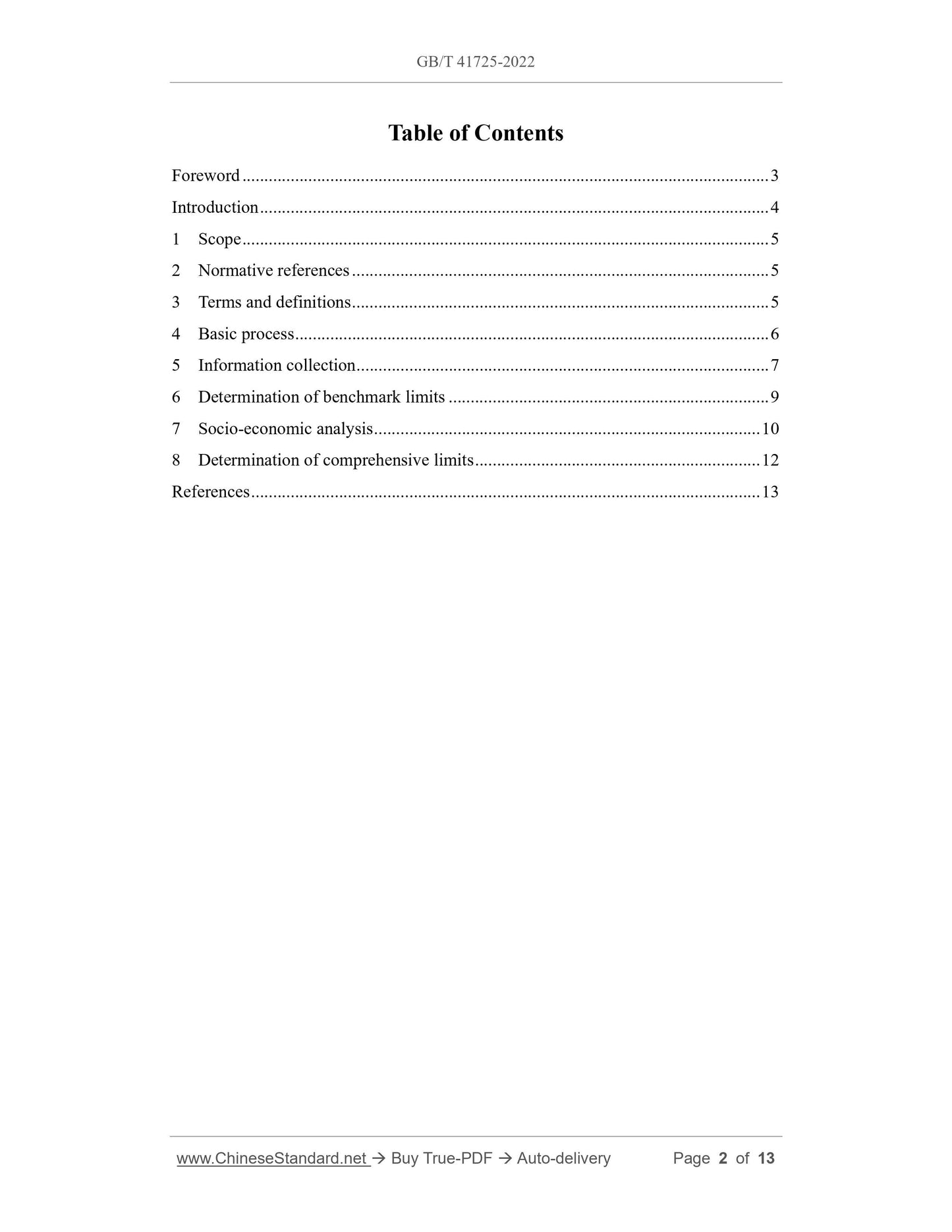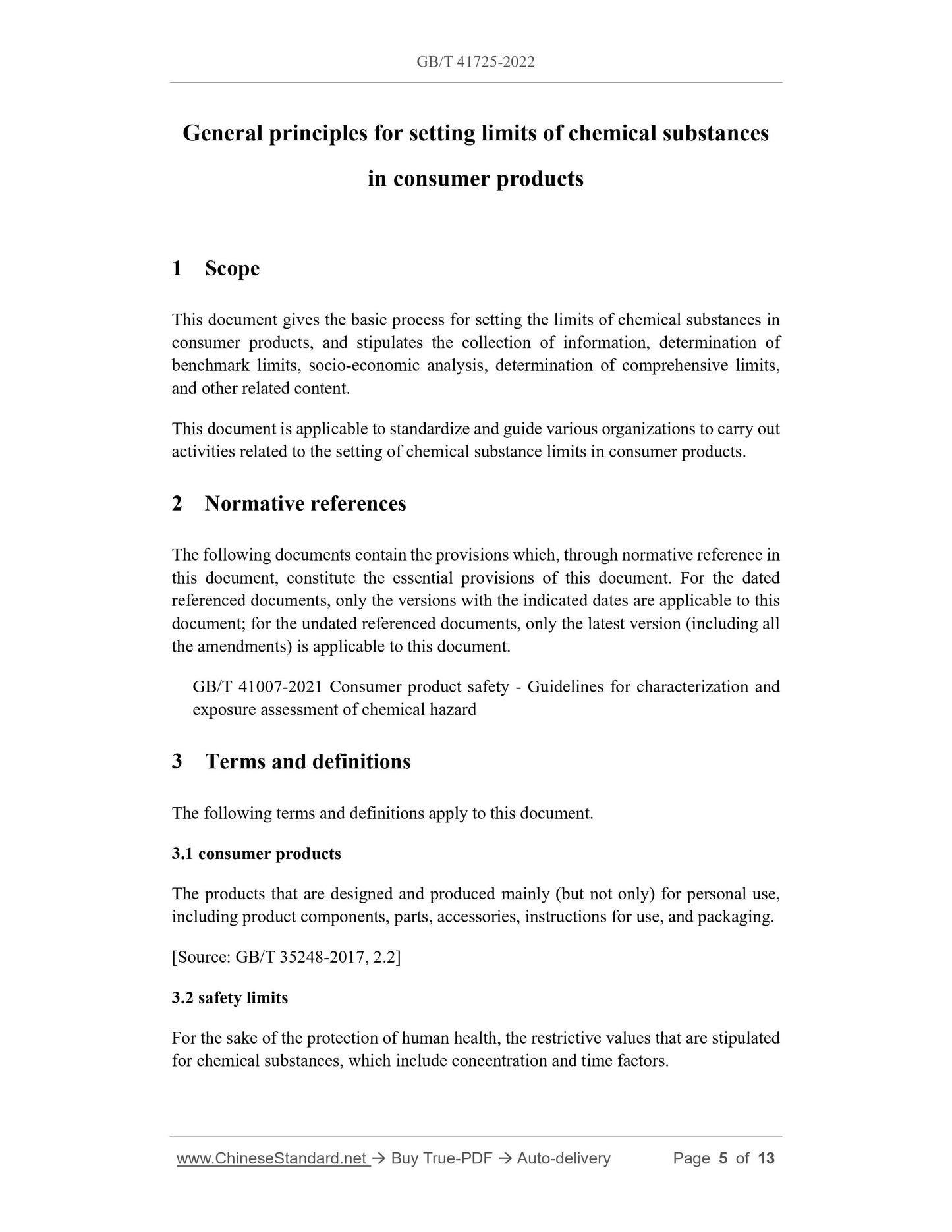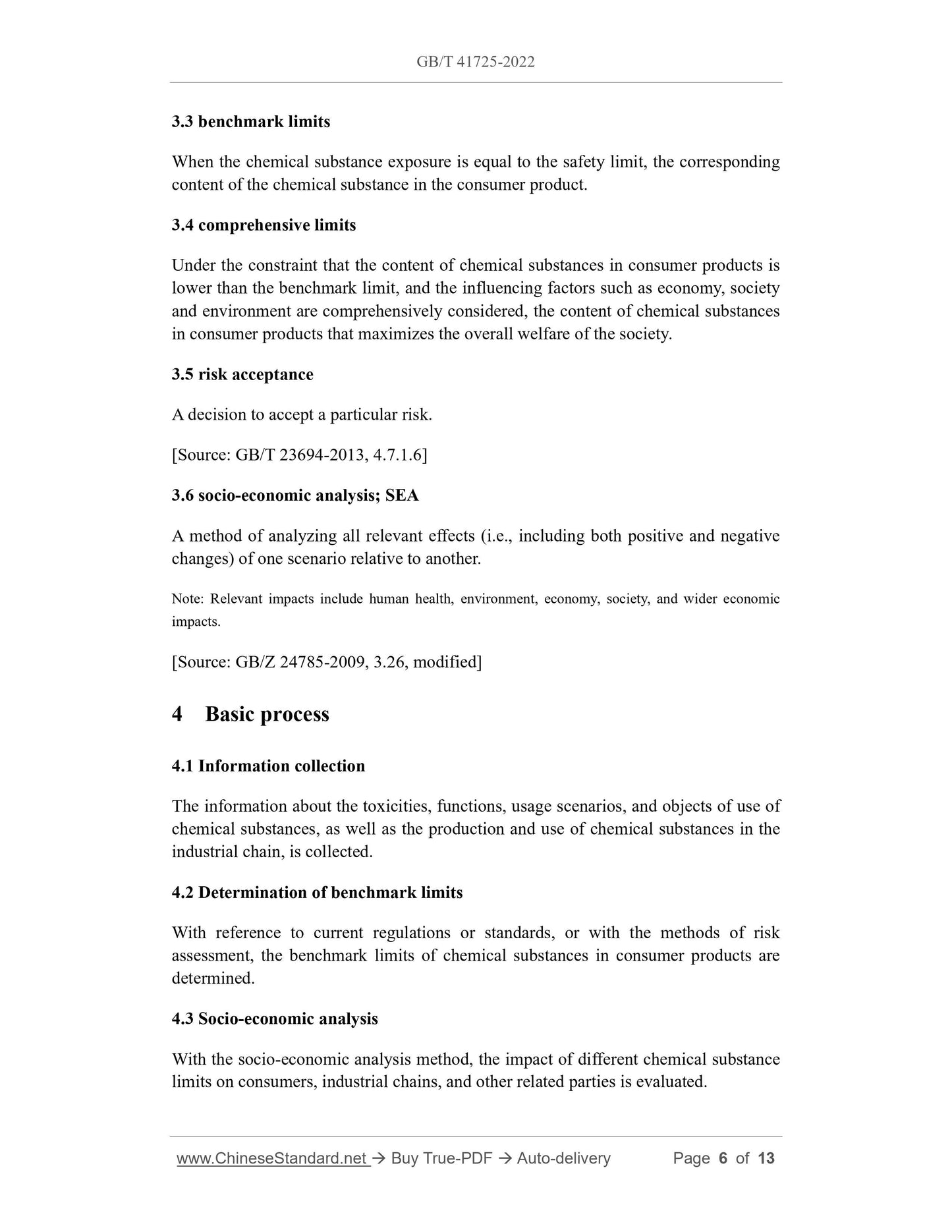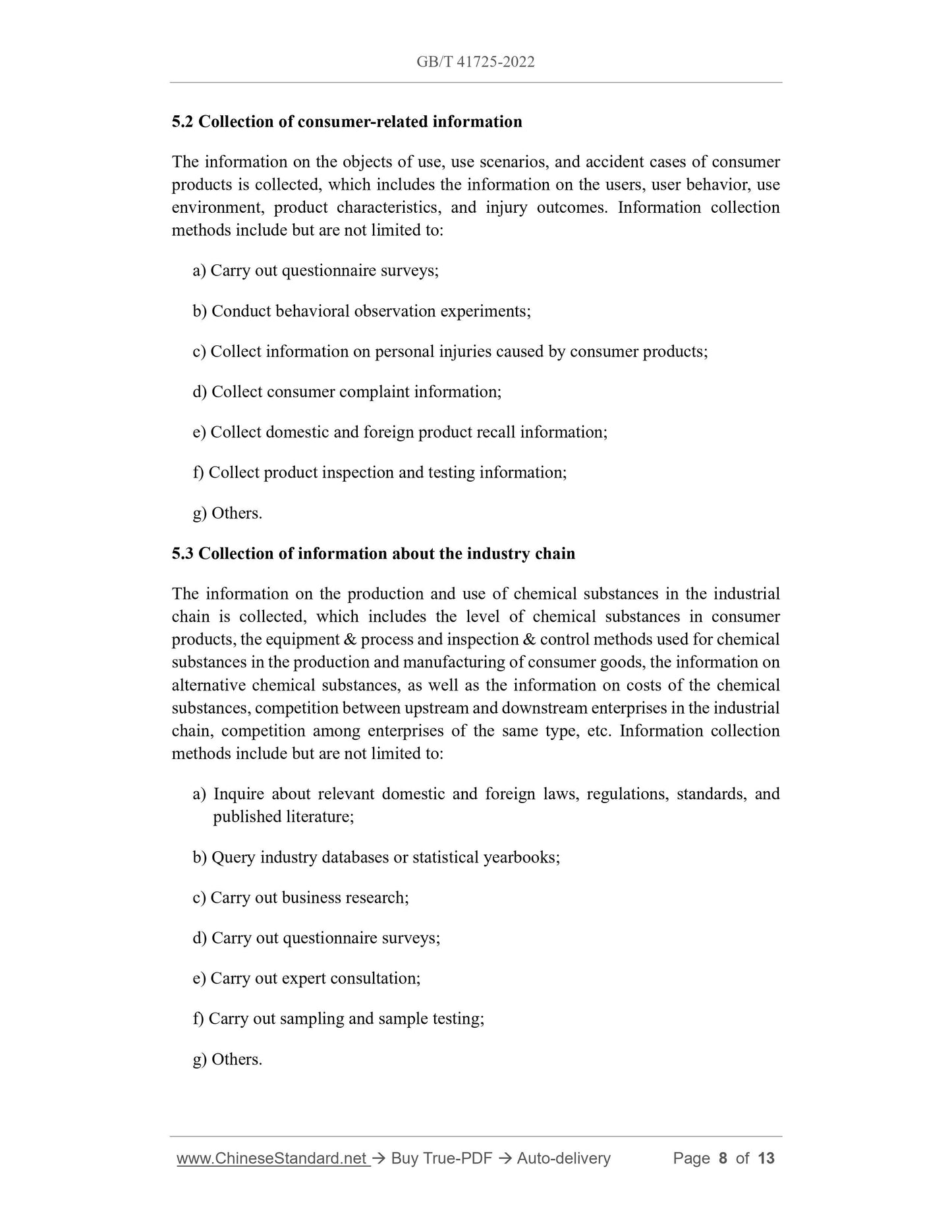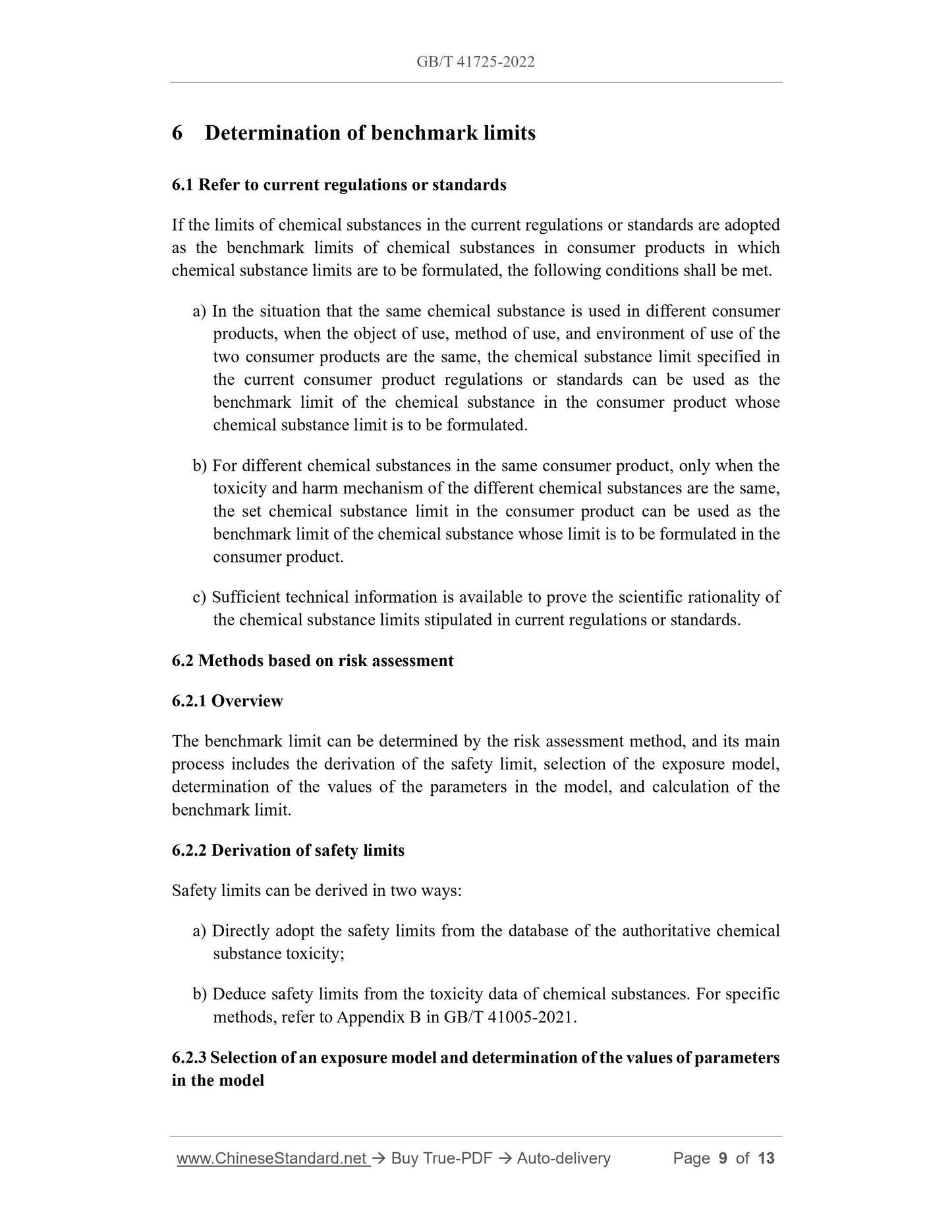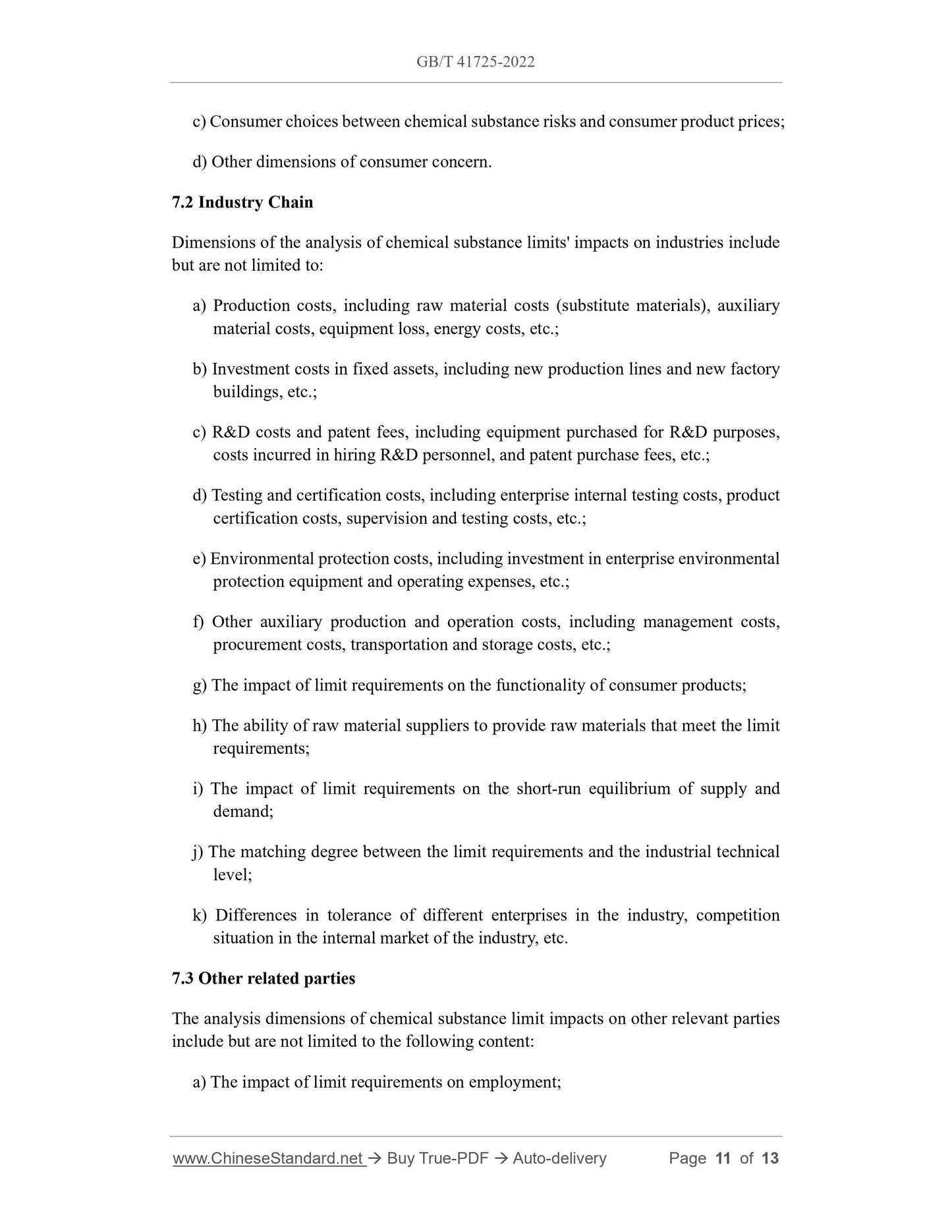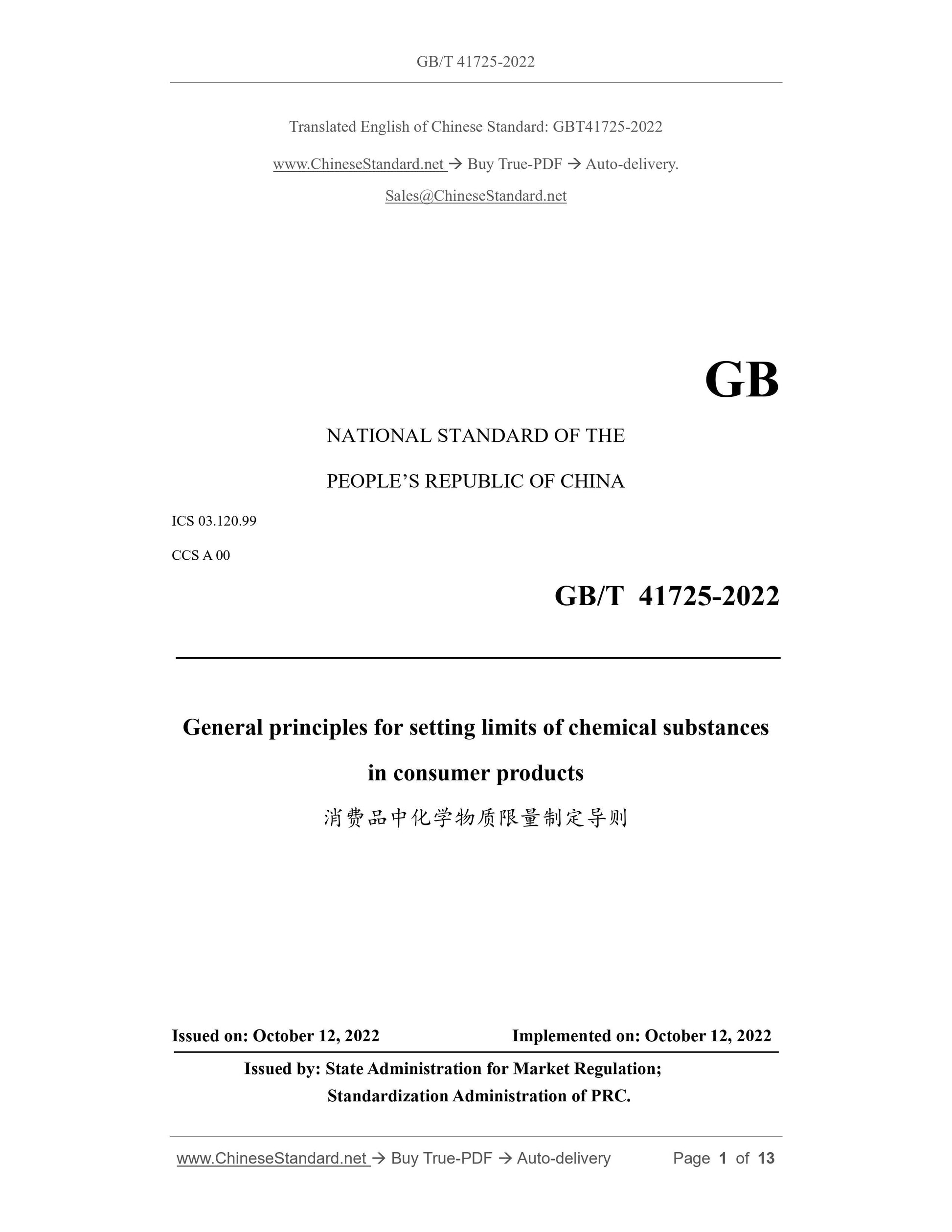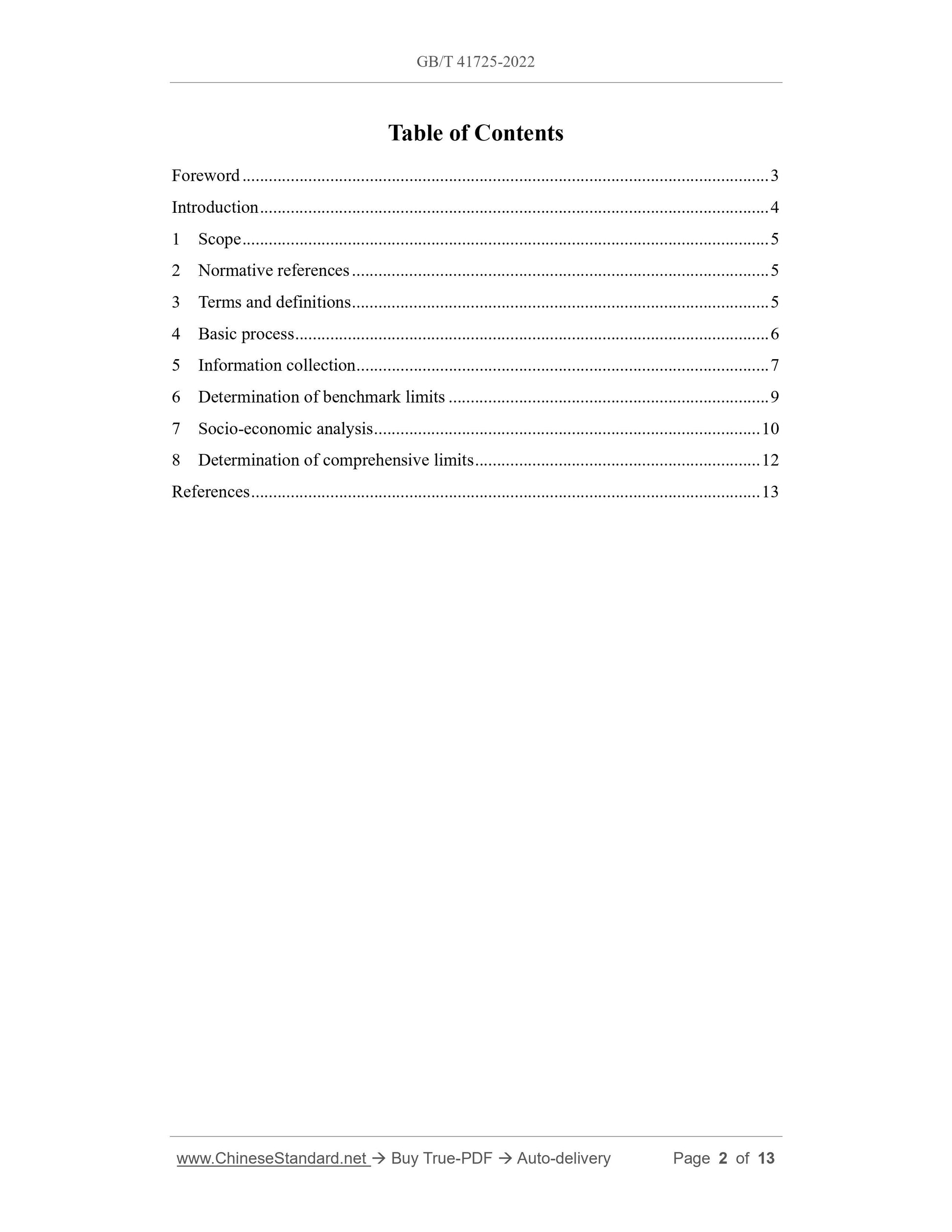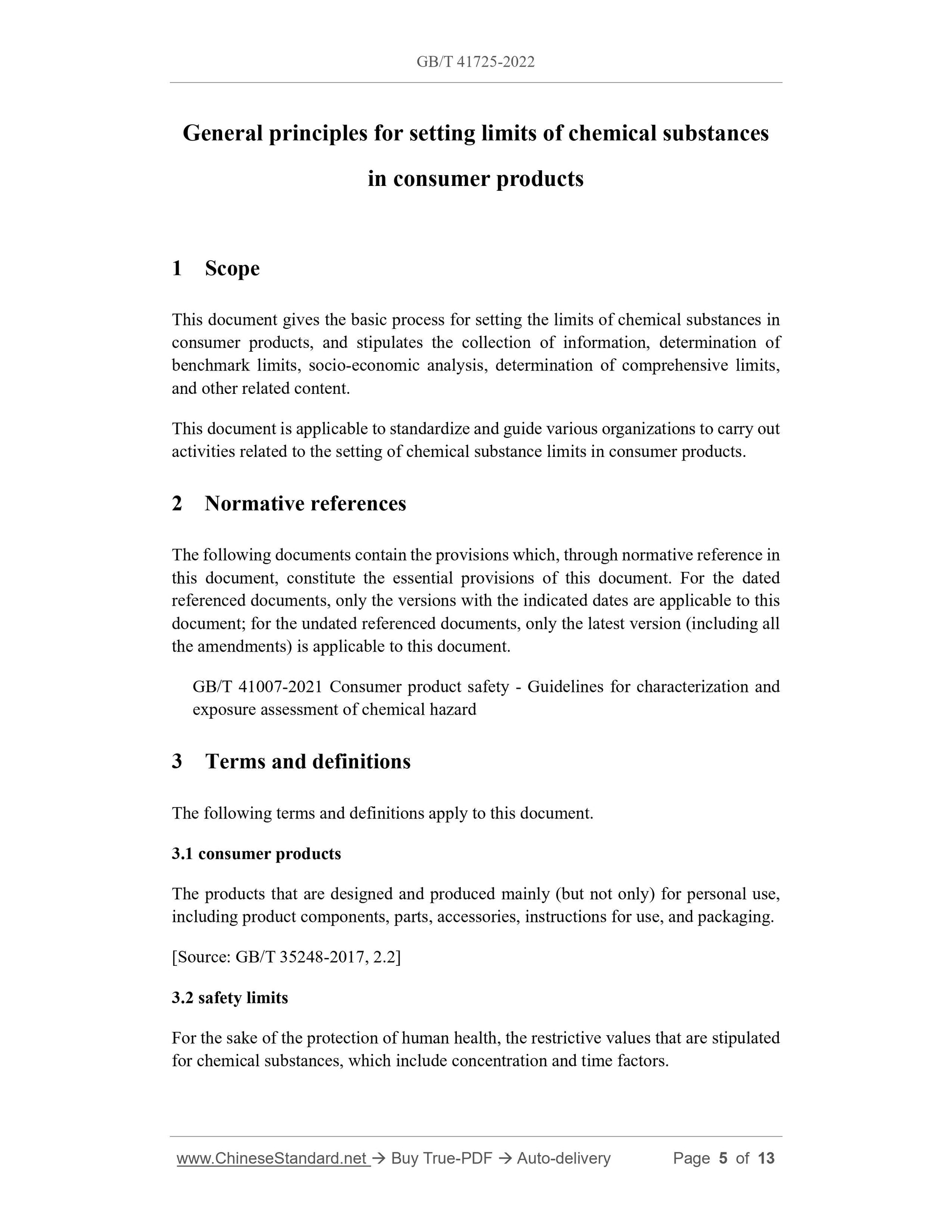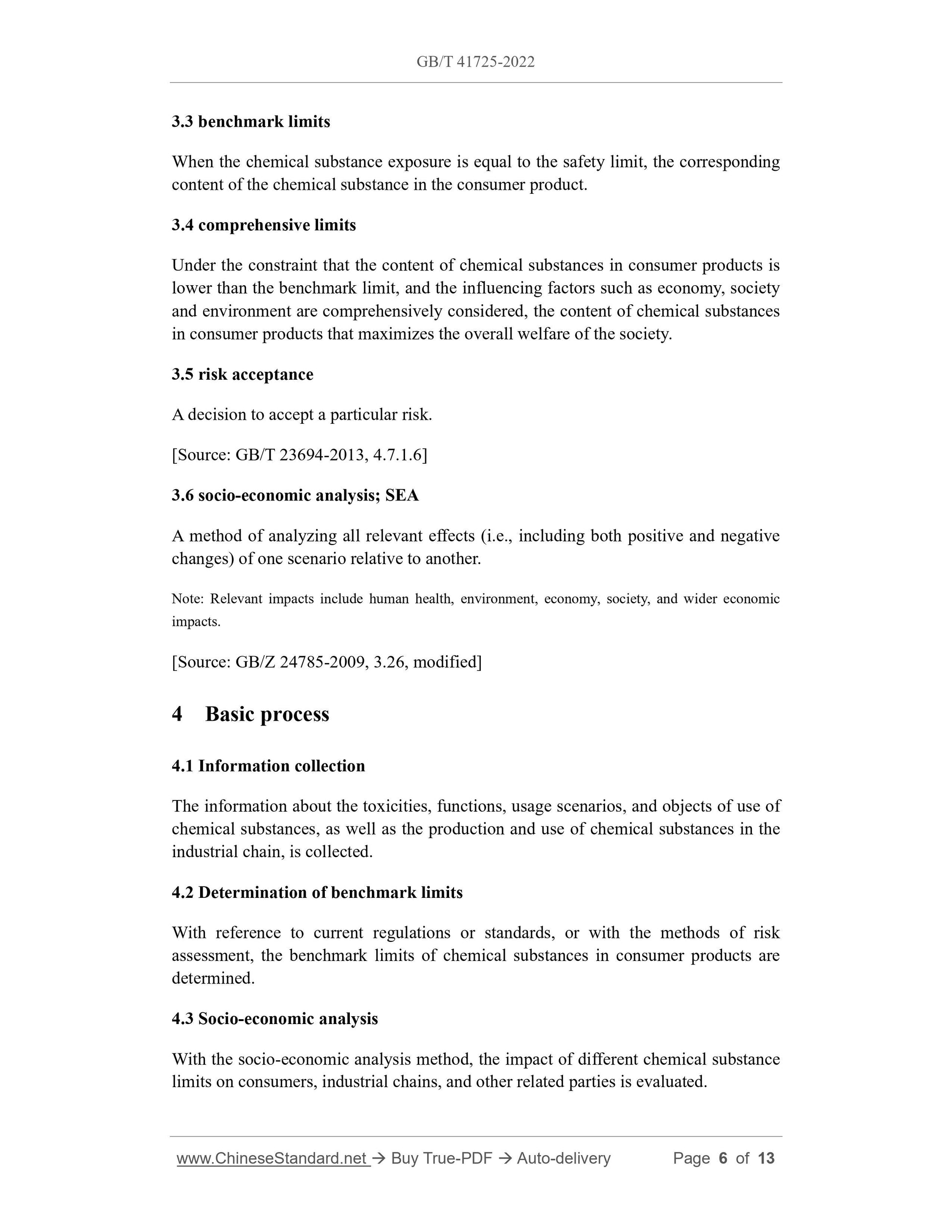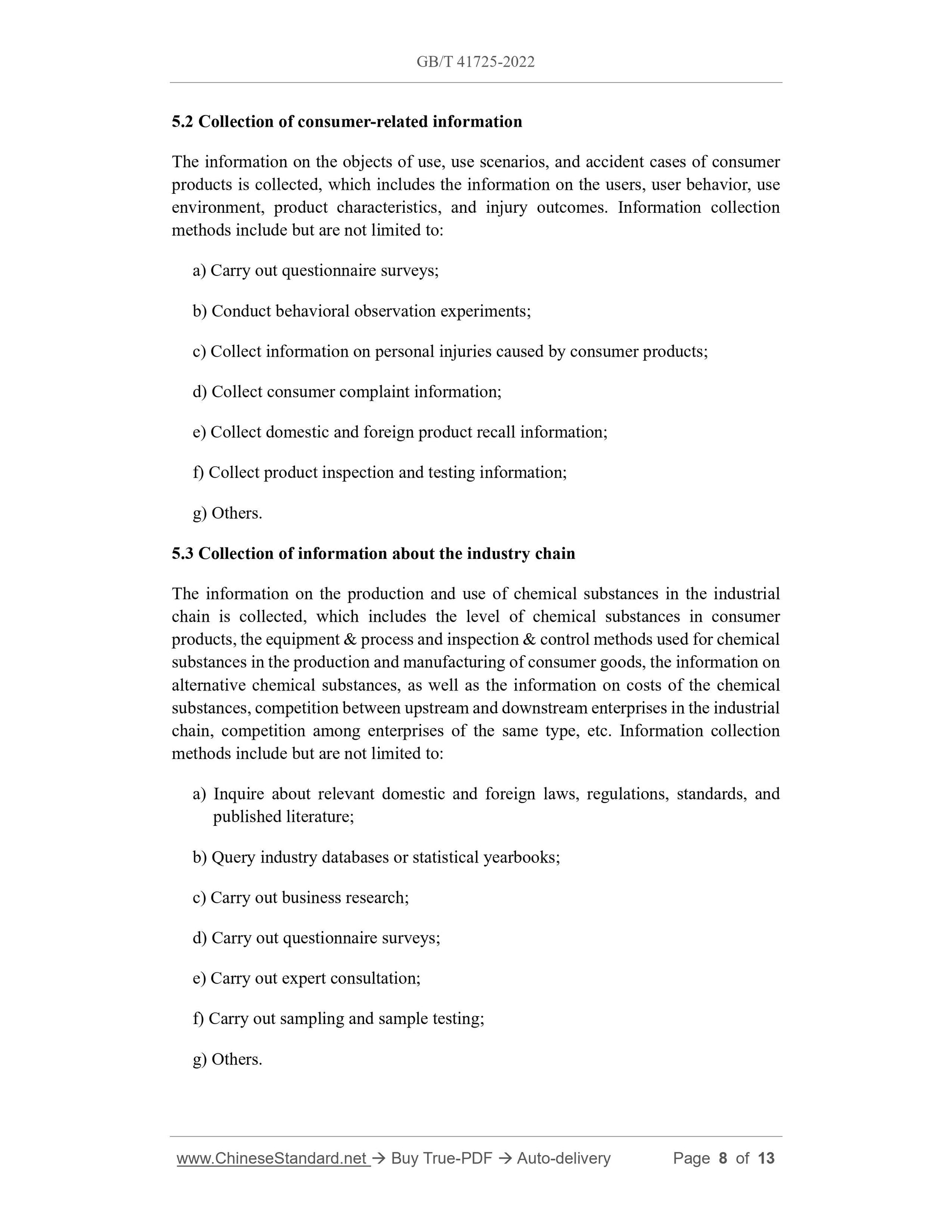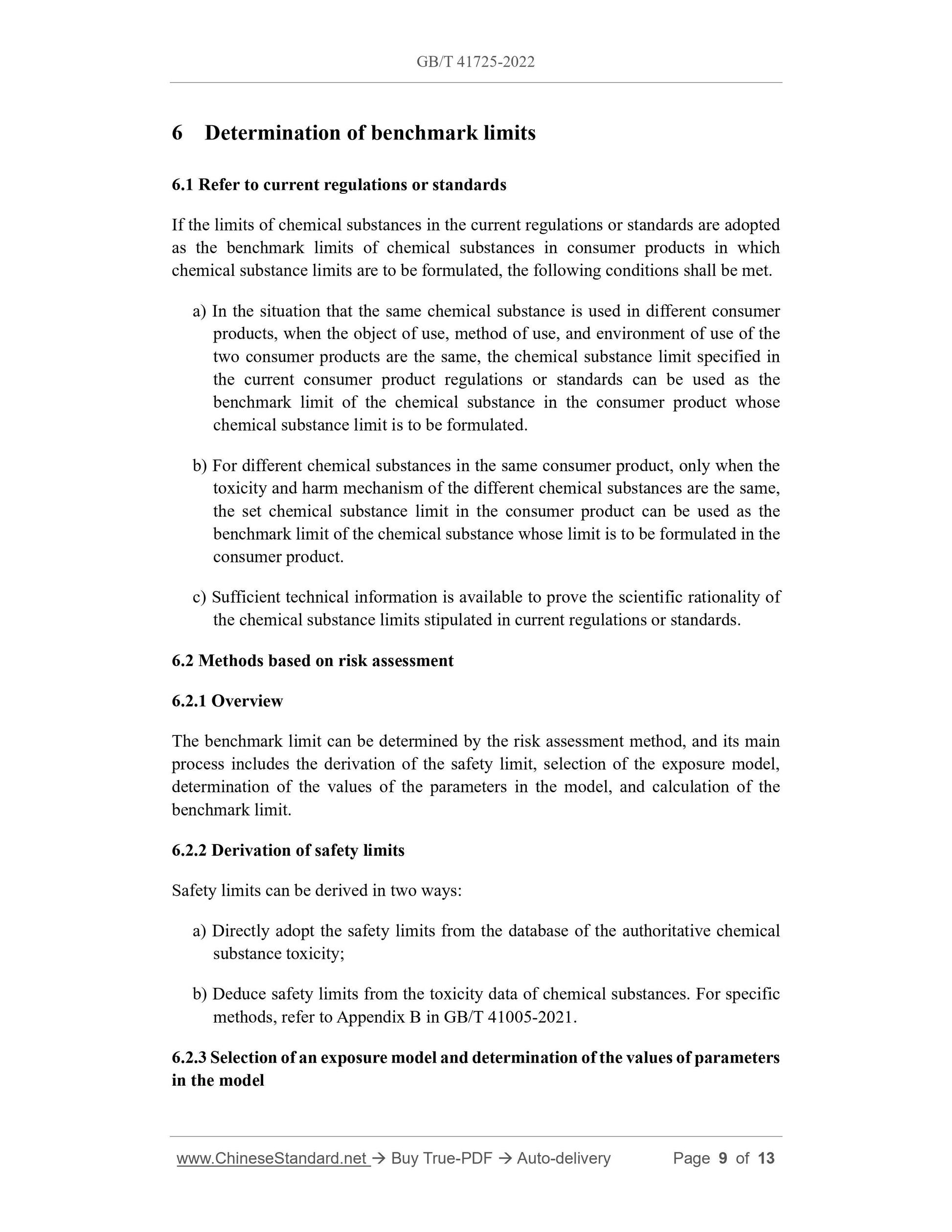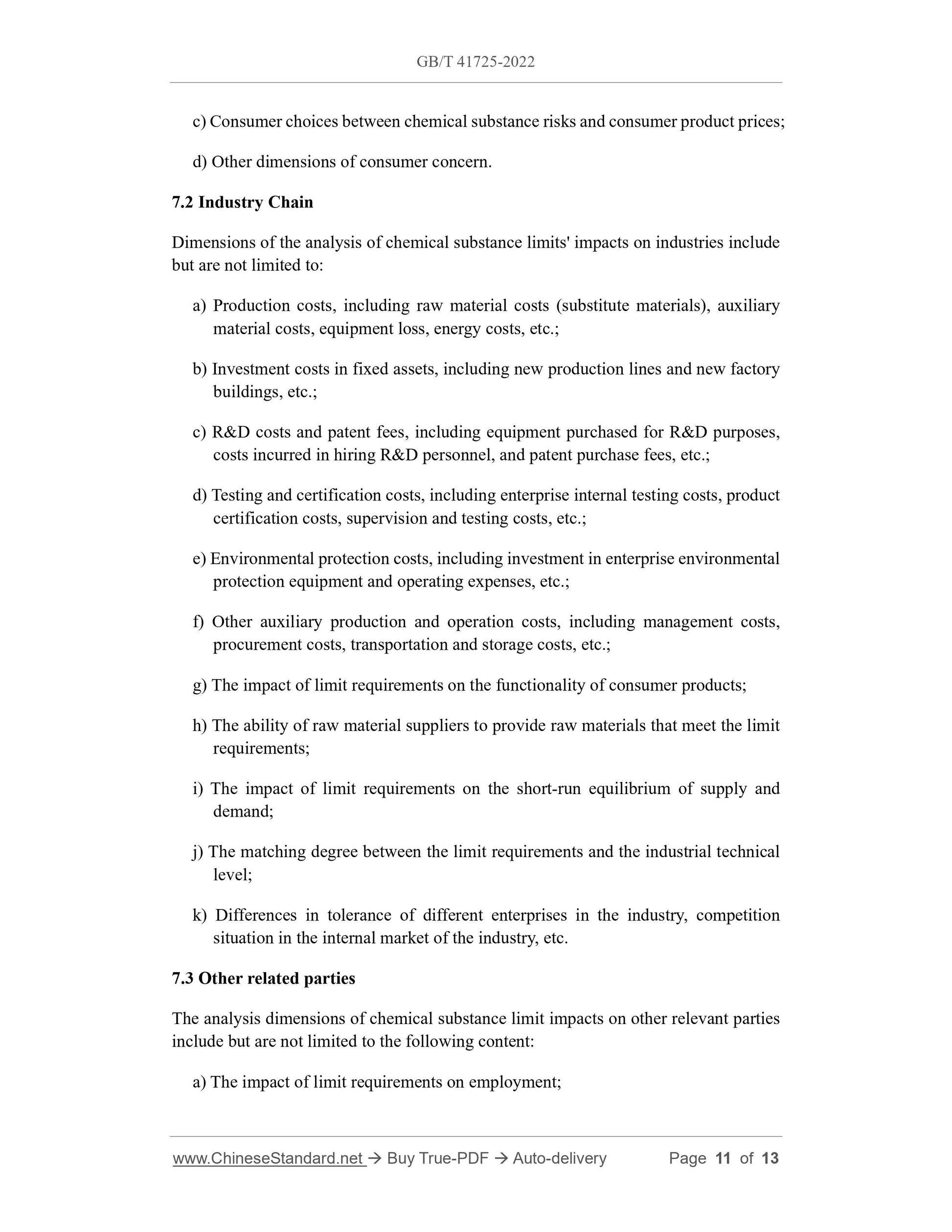1
/
of
7
www.ChineseStandard.us -- Field Test Asia Pte. Ltd.
GB/T 41725-2022 English PDF (GB/T41725-2022)
GB/T 41725-2022 English PDF (GB/T41725-2022)
Regular price
$170.00
Regular price
Sale price
$170.00
Unit price
/
per
Shipping calculated at checkout.
Couldn't load pickup availability
GB/T 41725-2022: General principles for setting limits of chemical substances in consumer products
Delivery: 9 seconds. Download (and Email) true-PDF + Invoice.Get Quotation: Click GB/T 41725-2022 (Self-service in 1-minute)
Newer / historical versions: GB/T 41725-2022
Preview True-PDF
Scope
This document gives the basic process for setting the limits of chemical substances inconsumer products, and stipulates the collection of information, determination of
benchmark limits, socio-economic analysis, determination of comprehensive limits,
and other related content.
This document is applicable to standardize and guide various organizations to carry out
activities related to the setting of chemical substance limits in consumer products.
Basic Data
| Standard ID | GB/T 41725-2022 (GB/T41725-2022) |
| Description (Translated English) | General principles for setting limits of chemical substances in consumer products |
| Sector / Industry | National Standard (Recommended) |
| Classification of Chinese Standard | A00 |
| Classification of International Standard | 03.120.99 |
| Word Count Estimation | 10,154 |
| Date of Issue | 2022-10-14 |
| Date of Implementation | 2022-10-12 |
| Issuing agency(ies) | State Administration for Market Regulation, China National Standardization Administration |
Share
